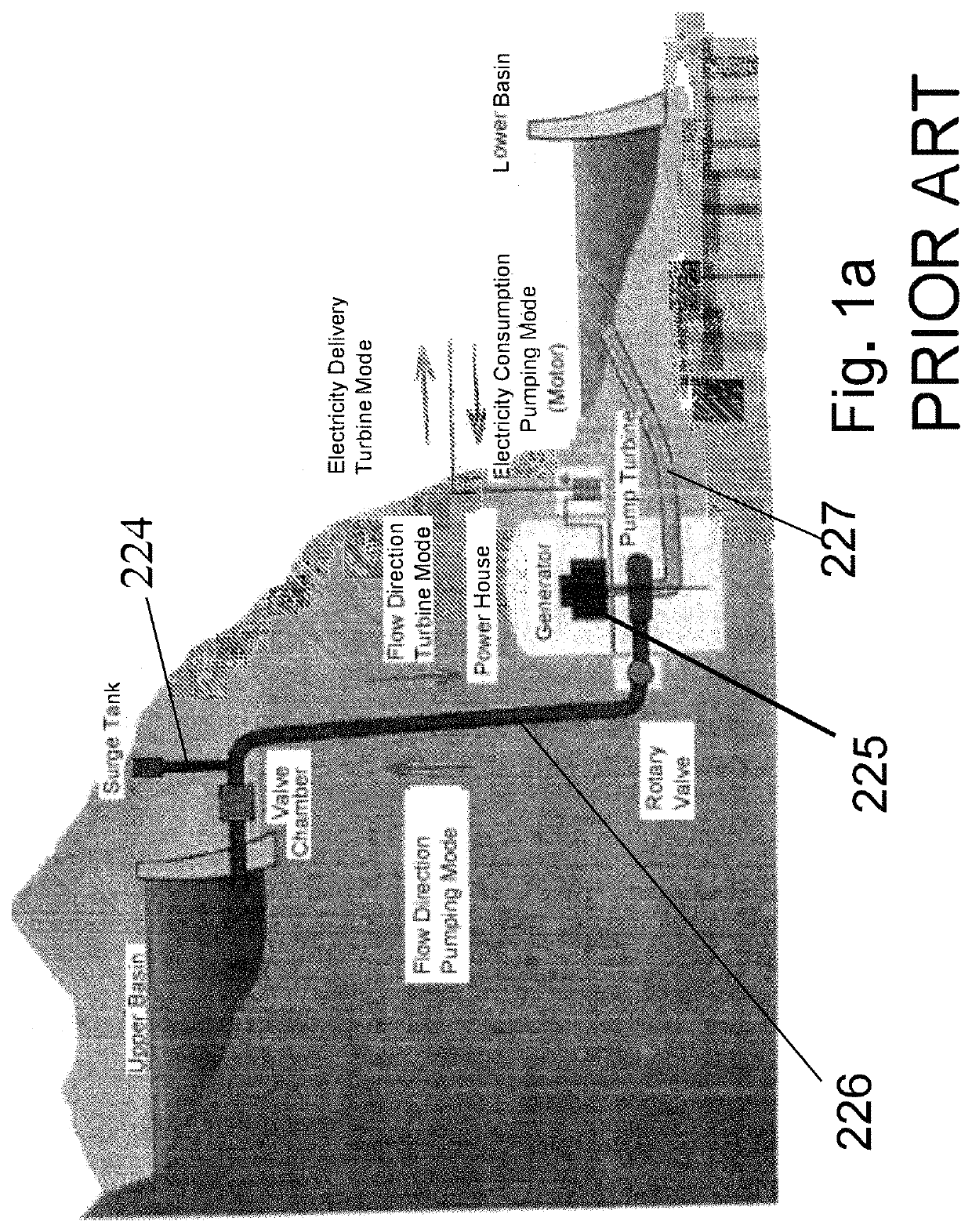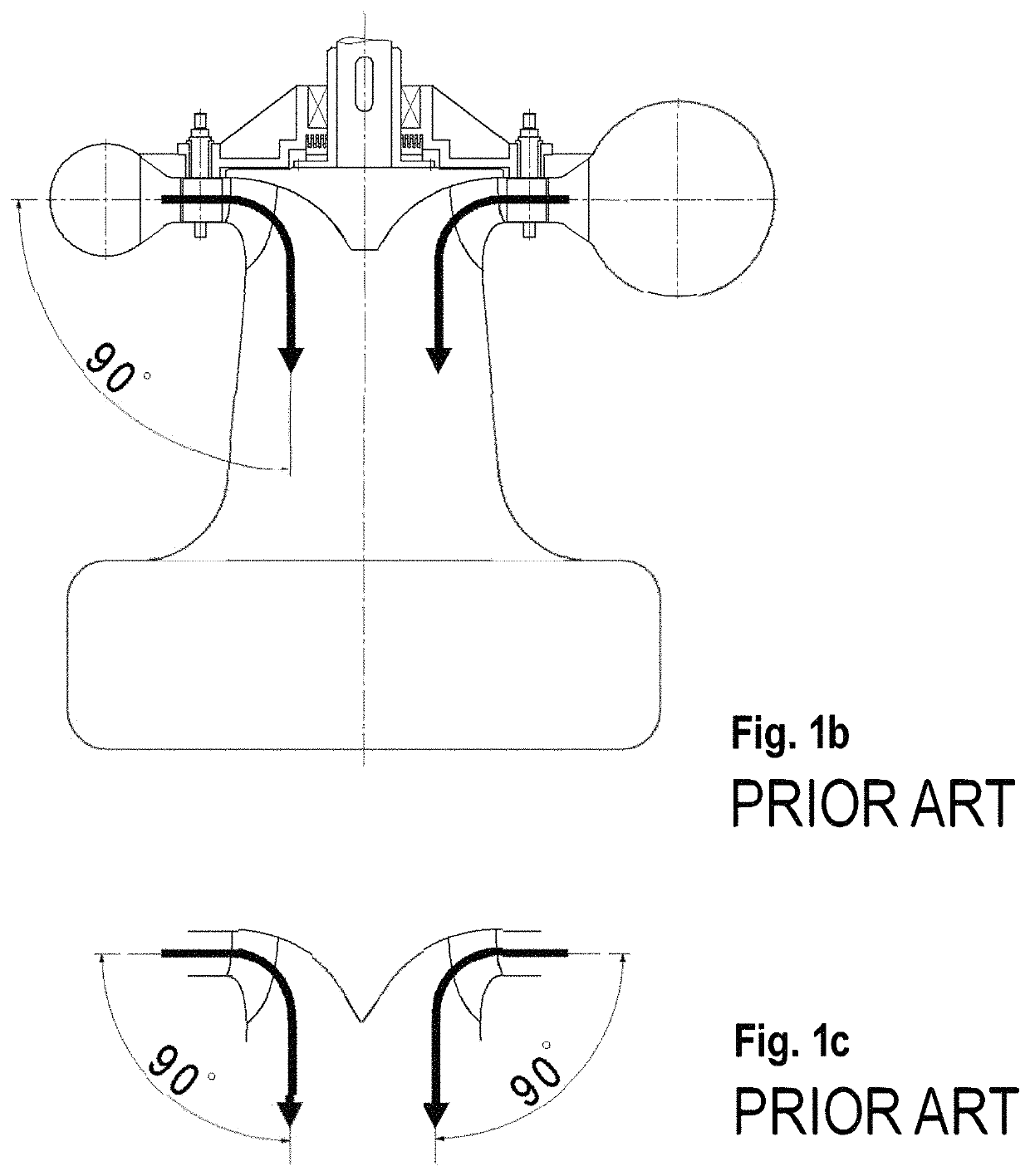Reversible pump-turbine installation
a pump-turbine and rotor technology, applied in water-power plants, machines/engines, liquid fuel engines, etc., can solve the problems of less than 100 mw, inconvenient excavation and underground construction, and required a deep and expensive excavation, so as to maximize the ratio of impeller tip diameter, maximize the head per stage, and increase the effect of head
- Summary
- Abstract
- Description
- Claims
- Application Information
AI Technical Summary
Benefits of technology
Problems solved by technology
Method used
Image
Examples
Embodiment Construction
[0054]Referring to FIGS. 1a, 1b, and 1c, a conventional pumped storage plant with a reversible pump-turbine is shown. There are several notably expensive features in such a conventional installation. These include;[0055]1) A surge shaft 224 is typically needed to relieve waterhammer that can result from a load rejection.[0056]2) An underground powerhouse 225 below tailwater level. Such a powerhouse is expensive to construct and is at risk of flooding due to human error or component failure. Flooding of an underground powerhouse is a hazard to the facility itself as well as to its operators.[0057]3) The penstock 226 and tailrace conduit 227 must be routed, at great expense to the same low elevation as the powerhouse itself.
[0058]Referring to FIGS. 2 and 3, a reversible pump-turbine installation in accordance with the present invention is shown. No underground powerhouse is required. Instead, a vertical borehole 17 allows the pump-turbine and motor-generator assembly 1 to be installed...
PUM
 Login to View More
Login to View More Abstract
Description
Claims
Application Information
 Login to View More
Login to View More - R&D
- Intellectual Property
- Life Sciences
- Materials
- Tech Scout
- Unparalleled Data Quality
- Higher Quality Content
- 60% Fewer Hallucinations
Browse by: Latest US Patents, China's latest patents, Technical Efficacy Thesaurus, Application Domain, Technology Topic, Popular Technical Reports.
© 2025 PatSnap. All rights reserved.Legal|Privacy policy|Modern Slavery Act Transparency Statement|Sitemap|About US| Contact US: help@patsnap.com



